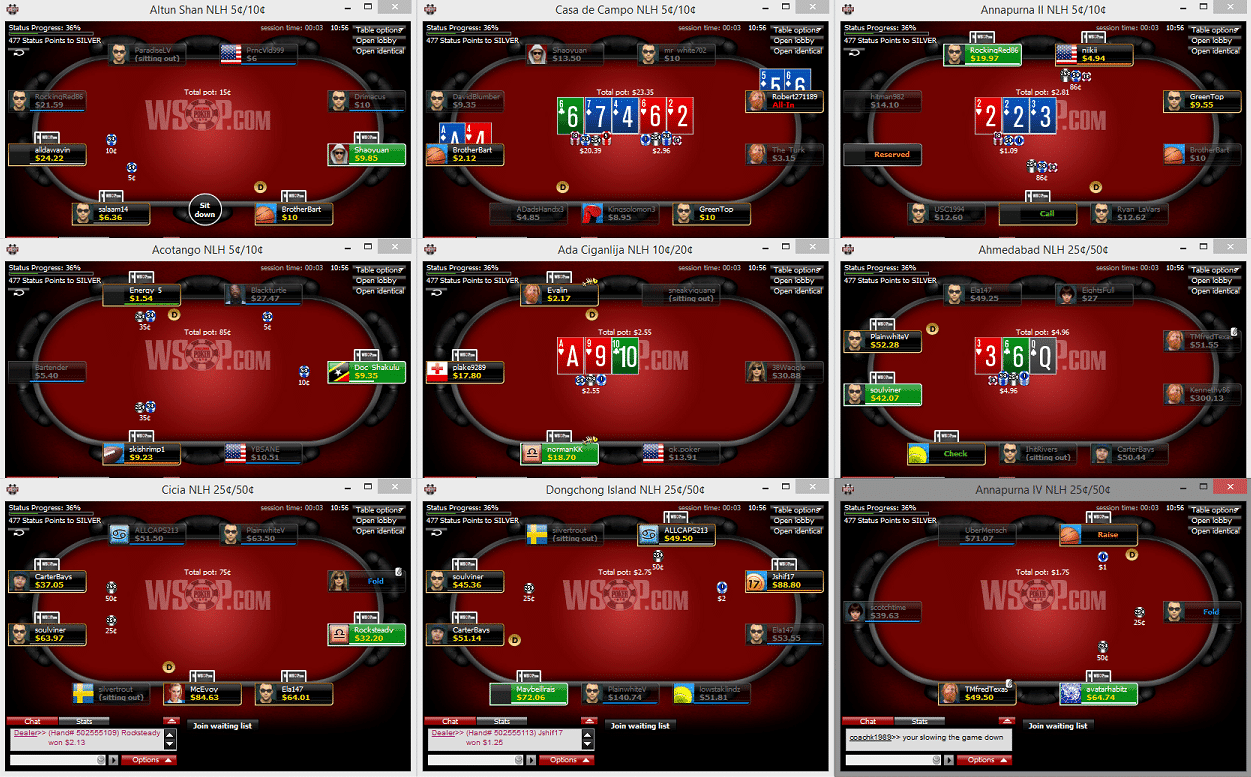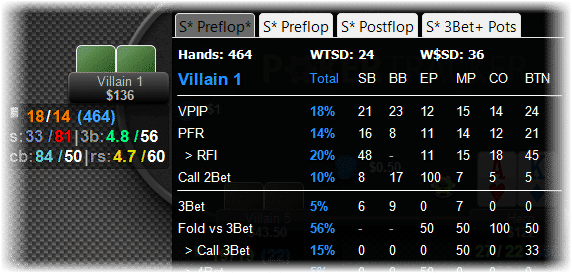Editor’s Note: With the coronavirus leading to the closure of poker rooms around the world, we decided many members of our community would appreciate information on the live-to-online poker transition. We have produced a considerable amount of material on this topic over the last few years, and intend to update it as best we can for the current environment.
We’re betting that a lot of you out there are still trying to figure out how to play online poker and other casino games.
First, let’s clarify exactly what we mean. There are really two very different questions behind “How do I play online poker?”
1. How do I get my cash onto a poker site to play real-money poker online?
2. How do I actually win this crazy-tough online game that bears much less resemblance to live poker than I ever could have imagined?
We’re going to tackle the first question briefly and then move on to focus on the second question.

Where Can I Play Real-Money Poker Online?
If you’re asking this question, you’re probably in the U.S., or somewhere where the major poker sites don’t have a huge marketing presence. Outside the U.S., there are plenty of sites to choose from (including sites where the information and action buttons are in Arabic). Signing up to the sites is generally straight-forward, although many require age and/or residency verification. In this article we will not endorse any sites by name, either for their safety or the quality of games. For such information, we encourage you to search our forums or make a post describing where you’re from and what you want to play, and we’re sure you’ll get an answer quite quickly.
If you’re in the U.S., you probably know online poker is only green-lit in a handful of states. We are obliged to be legally cautious here, but we can suggest again that you post to the forum and ask our members how they managed to get up and running with real-money poker in the U.S., because we know plenty of them have.
Now that we’ve got the formalities out of the way and you’ve made your first deposit, you’re probably wondering, “Since when did poker get this hard?”
Heightened Skill Levels in Online Poker
It’s generally accepted that stake-for-stake, online poker games are far ‘tougher’ than their live poker counterparts.
Generally speaking, $1/$2 NLHE in a live poker room is going to be significantly softer than $1/$2 NLHE online (or 200NL as it’s often called; online poker stakes are often referred to by 100bb buy-ins instead of blinds). There is no hard and fast rule for this, but the level of skill found in $1/$2 NLHE live players might be equivalent to the level of skill found in limits as low as $0.10/$0.20 online. If you’re wondering how you can ever turn a reasonable hourly at such low stakes, the great advantage of online play is that you can multi-table. In principle, this can even shorten the duration (in real time) of downswings, just through the power of sheer volume.
The big takeaway is that, if you’re a $1/$2 NLHE player live, we recommend that you don’t start at $1/$2 online unless you want to test your mettle against players with skills you’d normally find at $2/$5, $5/$10 or even higher live stakes. Instead, we suggest that you start playing smaller stakes than you’re used to, just to get a feel for the heightened skill level of online players at any given stake. And don’t feel embarrassed if you find your comfort zone is at stakes well below your usual live game. That’s simply the harsh reality of online play.
Microstakes: Your Real-Money Training Wheels
Lest we give you the impression online poker is too much of a challenge, it’s important to point out that the opposite is also true: You can find the softest cash games around online.
What accounts for this paradox is that available stakes often drop as low as it gets: $0.01/$0.02 or $0.02/$0.05 blinds. At this level, you are playing mostly with folks who are new to poker (and a few who are experienced but broke).
Though it can be a long and monotonous grind, in terms of bankroll management, this is where you want to start if your bankroll is small. It will be like shooting fish in a barrel if you know anything about poker, but it will still develop important discipline and mental game. Just don’t make the mistake of assuming people will play like they do at 2NL on any other level. Penny and nickel stakes are the training wheels of the online poker beginner.
Moving Up from 10NL to 25NL to 50NL
Most players with live $1/$2 NLHE experience will start somewhere between 10NL and 50NL. These are still considered the microstakes, but you will begin to encounter competent and even highly-skilled players at these levels. If you’re new to online poker, you might be surprised to see that some 50NL online games are tougher than the ones you’d buy in for at $200-$300 in your local card room.
The reason is simple: volume. Online players get so much more volume of play than their live poker counterparts, it isn’t even close. Most players at these levels are playing more than one table at the same time, and many are playing several. In that sense, 4-tabling 50NL requires the same amount of money on the table as $1/$2 live.
At these levels you will start to encounter plenty of ‘regs’ who you will see over and over again, and they will usually be the big winners. These folks will play thousands of hands in a single week, so not only are they going to be very experienced, they’re going to know exactly how a lot of the other players play. Making sense of that kind of hand volume would be no easy task for the human mind, but that’s where our next tip comes in.
WATCH NOW (PROS ONLY): Climbing the Stakes – 10NL (PRO video)
HUDs are Mandatory
A heads-up display (HUD) in the context of online poker is a little box that sits next to each player’s avatar, which displays the most relevant accumulated statistics about their play. It’s cumulative across the entire history of hands you’ve observed while at the table with your opponent, which means they get significantly more accurate as time goes on.
 There are a few sites that ban or try to ban HUDs, but for the most part, if you don’t have one, you’re at an enormous and quite possibly insurmountable disadvantage.
There are a few sites that ban or try to ban HUDs, but for the most part, if you don’t have one, you’re at an enormous and quite possibly insurmountable disadvantage.
Your first step as a serious online poker player should be to acquire HUD software and familiarize yourself with all the stats it displays. Knowing how to adjust your play based on the stats you see is even more important. Using a HUD may be plug-and-play on a software level, but on a strategy level, knowing how to use that information to modify your actions is both an art and a science you’d do well to master. If you need a specific recommendation, our ‘Best Poker Strategy Software‘ guide has a few, and our forum is always a good place to ask for suggestions.
READ NOW: Poker HUD Stats: The Basics for Live Players (article)
100NL and Up
Your mileage may vary, but there is a palpable increase in skill level when moving up to 100NL and 200NL. Again, this can be surprising to folks who are new to online poker and regularly buy in for more at their live cash games.
You will also see the games ‘thin out’ like they do with $5/$10+ live, meaning there simply aren’t a ton of tables spreading that limit. You’re likely to be very familiar with players at this level because they aren’t that abundant.
The levels above 200NL are fiercely competitive. You’ll start to find players that would be playing the highest limits spread in your live poker room.
Of course, there are rich fish and whales at these levels too; people who have fat bankrolls and don’t mind spewing off a few grand. You will find many of the games form around them, not unlike live poker.
But if you’re getting into these levels, you’re probably well beyond needing the basic advice in this article and should just get a PRO membership to start crushing your opponents by sharpening your strategy edge. Alternatively, if you’re nearer the start of your poker journey you may find our CORE membership better suited to your needs.
Mental Game in Online Poker
Having your head together is always important in poker, but arguably more so online than live.
In live poker, it is much harder to spew off an entire bankroll in a single session. Or put more simply, it takes longer to lose. With the speed and volume of online poker, you can go busto in a few clicks.
Therefore, your mental game is paramount. It’s so much easier to lose focus with all the distractions of being at home (or wherever you play online poker). It’s easier to succumb to tilt, and easier for tilt to do widespread damage to your bankroll before you notice and stop the bleeding. The risk list goes on and on.
Don’t underestimate mental game in poker, and make sure you’re studied up on what it takes to play your A-game from the first hand of your session to the last.
READ NOW: The Last Poker Edge: Mental Strategy (article)
The Ultimate Study Tool
One of the best things about online poker is that every hand you play — and even the ones you don’t — are recorded in minute detail in your HUD program. Most of these programs have incredible tools built in to help study and analyze your hands, both as single hands and in the aggregate. The biggest mistake you can make is to not use this information to improve your game.
Playing online poker and studying online poker must go hand-in-hand. This is especially true because strategies in online poker can change rapidly. Players get better faster, and it is far easier to make more mistakes in a shorter period of time. If you’re not studying the hands you play constantly, you won’t have time to improve before the strategic curve gets ahead of you.
Luckily, online poker is truly the ultimate poker study tool. You’ll be sitting right there at your screen with Flopzilla, GTORangeBuilder, or your other poker strategy software, plugging in your automatically-recorded hand histories and running in-depth analysis in seconds. Your tracking software will have incredible built-in tools to identify leaks across your game based on enormous and relevant sample sizes. Every live player could benefit from using online poker just as a study tool for live poker, even if they’re not trying to become a serious online player.
LISTEN NOW: How to Study Poker & Improve Faster (podcast)
Amped-Up Aggression in Online Poker
It’s fair to say that online poker games tend to be more aggressive than live poker games, but that doesn’t mean there’s a fundamental strategic difference. After all, they are still the same games with the same rules whether they’re virtual or real-life.
If anything, players just tend to be better online, and aggressive poker is usually better poker from a strategic standpoint.
There is certainly something to be said about how much easier it is to be aggressive when one is anonymous, has no physical tells, and only needs to click a button to commit huge bets to the pot. Many normally nitty players report making aggressive moves online that they would never make live. The amped-up aggression factor deserves reverence and attention. One must always be aware of the aggression one is fielding, as well as the aggression one is putting out there. Be keen to avoid getting reckless, and look to exploit other players who can easily slide into tilt-aggression territory.
LISTEN NOW: How to be a More Aggressive Player (podcast)
On the Clock
Another huge difference between online and live poker is that you’re always on the clock. There would be no online poker if you could tank on every hand.
Sites will differ in their clock length. You will often only have a fraction of a minute to act, with the ability to ‘time bank’ and mini-tank for a limited amount of time on big hands. Fail to act in time and your hand will be folded, and you will be sat out of the game.
This is certainly a very obvious difference that you’re likely well aware of, but it’s important to understand the strategic difference. In the general sense, the time clock amplifies mistakes. It produces calls and folds that sometimes would not normally happen live. It’s as important to use this to your advantage to put extra pressure on other players, as it is to develop a solid planning process so that big decisions don’t catch you off-guard.
When you’re feeling squeezed by the clock ticking down and the increased aggression, just remind yourself: At least you don’t have to tip any dealers.

